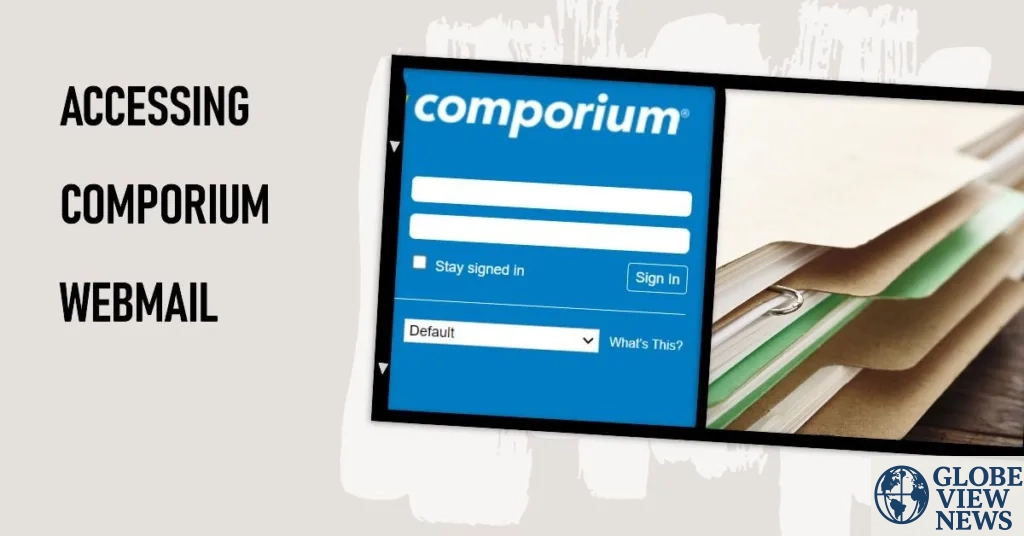In today’s vast digital landscape dominated by tech giants like Google, Microsoft, and Apple, smaller regional service providers often go unnoticed by the broader internet audience. Yet, they play a crucial role in bridging communities to essential communication tools. Comporium web mail is one such example — a regional yet robust email service that remains vital to thousands of users, especially in certain parts of the United States. This article provides a comprehensive exploration of comporium web mail, covering its history, functionality, role in community connectivity, comparison with mainstream platforms, and its significance in the broader conversation about digital inclusion.
Before diving into the specifics of comporium web mail, it is helpful to understand its parent company. Comporium Communications, rooted in South Carolina, has a rich history dating back to the late 19th century when it started as a small telephone company. Over time, it expanded into a full-fledged telecommunications and technology provider, offering broadband, cable television, security systems, and, importantly, email services to its customer base.
While it might appear modest compared to multinational tech corporations, Comporium’s impact within its regional footprint is profound. It serves as a lifeline for residents and businesses alike, providing stable internet connectivity in both urban centers and rural communities. In an era when reliable digital communication is non-negotiable, comporium web mail ensures that local customers are not left behind.
At its core, comporium web mail functions similarly to other web-based email systems. It allows users to send, receive, and organize electronic messages through an internet browser, without the need for complex installations or third-party clients.
Upon logging in, users find a straightforward interface with familiar folders such as Inbox, Sent, Drafts, Junk, and Trash. There are basic tools for composing, replying, forwarding, and attaching files. While it may not boast the cutting-edge AI sorting or predictive text features found in Gmail or Outlook, its simplicity aligns well with its customer base, many of whom value a clutter-free, easy-to-navigate experience.
Moreover, comporium web mail integrates seamlessly with Comporium’s broadband services, giving local residents an all-in-one communications hub. It’s especially helpful for households or small businesses that prefer having internet, TV, security, and email managed by a single provider.
With free, feature-rich alternatives like Gmail widely available, one might ask: why do people stick with comporium web mail? The answer lies in trust, local support, and community presence.
Unlike faceless tech conglomerates, Comporium maintains local offices and customer service centers. When a resident has trouble logging in to comporium web mail, they can call a local help desk or visit an office, sometimes speaking with a neighbor or someone they know personally. This community-oriented support is invaluable, especially for less tech-savvy users.
Additionally, local businesses often prefer using comporium web mail addresses because they project a sense of local identity. Seeing a business email ending in @comporium.net signals that the company is a local player, which fosters trust within the community.
Email security is a universal concern. Large providers have the advantage of massive budgets for cybersecurity teams and advanced encryption, but smaller regional players must still meet the same user expectations for privacy.
Comporium mail takes this responsibility seriously. It employs secure socket layer (SSL) encryption to protect data during transmission. Spam filters and virus detection tools help reduce unwanted or harmful messages. Though its protective measures may not be as advanced as those of industry titans, Comporium’s local IT staff constantly work to monitor and strengthen security protocols.
For many users, the fact that their data is managed by a local provider — rather than stored in vast, opaque global data centers — is reassuring. It feeds into a broader trend of digital decentralization, where users seek greater control over their personal information.
One of the key strengths of comporium mail is its simplicity. For individuals who find Gmail’s AI-driven sorting or Outlook’s feature density overwhelming, Comporium’s straightforward interface is a relief. There are no confusing tabs or hidden settings — just essential email tools presented clearly.
However, this simplicity also means that comporium mail does not cater well to power users who need advanced features like seamless multi-account integration, third-party app plug-ins, or real-time collaborative editing. Those users often maintain a separate Gmail or Office 365 account for complex work-related tasks.
Another common critique is that the webmail’s mobile experience, while functional, lags behind the fluid, polished mobile apps of major providers. Many Comporium users therefore rely on the built-in email clients on their smartphones (such as Apple Mail or Samsung Email) to check their comporium web mail account on the go.
While much attention is paid to global cloud services, regional ISPs like Comporium play an unsung but vital role in digital inclusion. In rural parts of the Carolinas and other regions they serve, Comporium is sometimes the only reliable broadband option. Their commitment to upgrading infrastructure — from dial-up lines decades ago to today’s fiber optic networks — is a testament to their role in bridging the digital divide.
Comporium mail is part of this commitment. It ensures that even users with minimal tech exposure can set up an email account, manage basic communication, and participate in the digital world — whether that’s receiving school updates, accessing medical appointments, or staying in touch with family.
Placing comporium mail alongside Gmail or Outlook is like comparing a small-town library to a sprawling national library system. Both serve the core function — providing access to information and communication — but differ in scale and specialization.
Gmail’s AI spam detection is industry-leading, its storage vast, and its integrations nearly limitless. Outlook, with its enterprise roots, offers tight integration with Microsoft Office, scheduling tools, and collaboration features tailored for corporate environments.
In contrast, comporium mail doesn’t aim to compete on feature complexity. Its competitive edge lies in personal support, local familiarity, and the simplicity valued by community members who may not need or want big-tech bells and whistles.
For many residents and businesses, comporium mail is more than a utility — it’s woven into the fabric of daily life. A retiree in Rock Hill might use it to keep in touch with distant grandchildren. A local landscaper could manage client appointments and estimates through a @comporium.net address.
During regional emergencies like hurricanes or severe storms, when larger networks may be overwhelmed or damaged, Comporium’s local teams often work around the clock to restore services. Having a local provider means faster response times and dedicated support — an advantage that big providers with offshore call centers can’t always match.
Looking ahead, comporium mail faces both challenges and opportunities. Younger generations increasingly favor integrated messaging platforms, social media DMs, and collaboration suites over traditional email. To stay relevant, Comporium must balance the needs of its loyal base with subtle innovation.
There is potential for enhancing mobile usability, introducing optional cloud storage, or offering seamless integration with smart home and security systems — all services already under Comporium’s umbrella. These upgrades would allow comporium mail to retain its simplicity while providing a few modern conveniences that today’s users expect.
Additionally, as cybersecurity threats evolve, continuing to strengthen spam detection, phishing prevention, and user education will be essential to maintain trust.
In a hyper-connected world where global tech conglomerates dominate headlines, regional services like comporium web mail remind us of the enduring importance of community-rooted technology. It serves as an accessible, dependable option for thousands of families and businesses — many of whom appreciate a familiar name they can call or visit for help.
While it may never boast the global reach or cutting-edge innovation of Silicon Valley’s biggest players, comporium mail succeeds by staying true to its mission: providing straightforward, reliable digital communication backed by real people who understand their customers’ unique needs.
For users, this means one less worry in an increasingly complex digital world. For Comporium, it means continuing a proud legacy of connecting communities — one message at a time.

